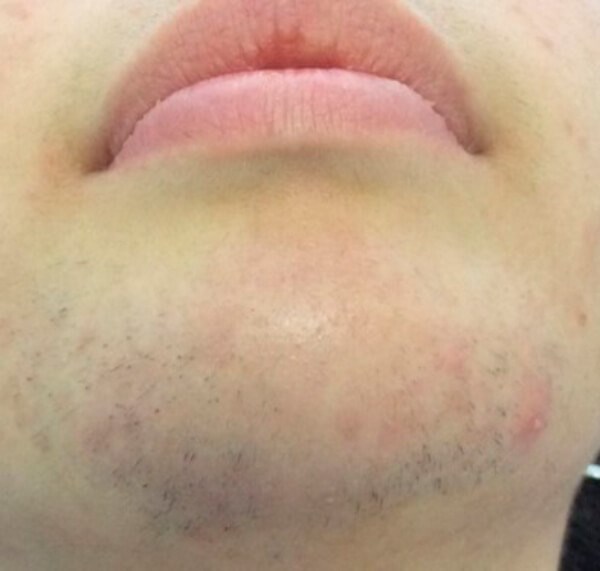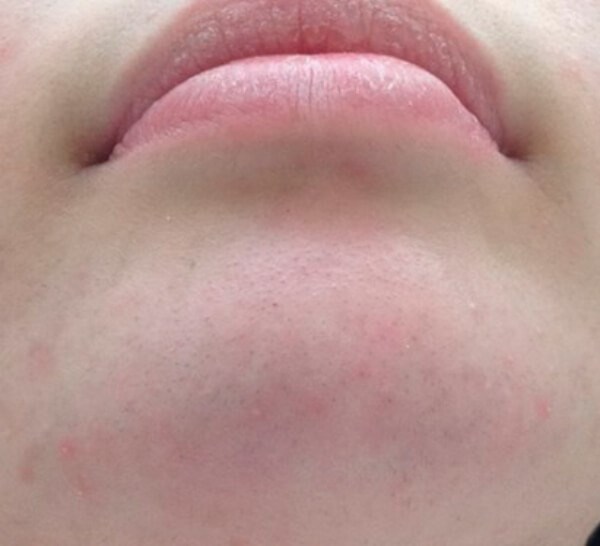Laser hair removal is the most performed aesthetic procedure worldwide, with a continuous and increasing demand over the last two decades.
It was introduced to the market in the early 1990s and several million procedures have been performed since then. Science and clinical data show us that is a safe and effective treatment backed up by 25 years of experience.
This treatment became popular because, when compared with traditional epilation procedures such as waxing, it is more comfortable and the results last longer.
It started using first generation intense pulsed light devices and long pulsed ruby lasers but, now, the hair removal gold standard lasers are alexandrite (for phototypes I-III) and Nd:YAG (for phototypes IV-VI).
The principle of the treatment is photothermal damage of the hair stem cells. The light is absorbed by the hair, transformed to heat that is conducted to the hair bulge and papilla, where the stem cells are. If heated up to 72ºC, it will produce an irreversible damage that will lead to permanent destruction of that follicle. There are three stages of hair growth – anagen, catagen and telogen. Hair in a certain area will include all these three stages. Successful laser hair removal treatments require the hair to be in the anagen stage of growth as this is the only time the hair follicle is attached to the bulb. The hair follicles in catagen and telogen phases are not attached to the bulb. For this reason, several treatment sessions are required, allowing the hair follicles to move through the cycle and those in the anagen phase will be permanently destroyed. The average number of sessions needed to achieve permanent hair reduction is approximately six to eight sessions. For darker skin types the number of sessions is greater.
As there are always some immature follicles present, these may eventually start to grow. Therefore, after a successful course of treatment it may be necessary to perform maintenance sessions to keep the permanent epilation status.
We’ll review the various steps of the procedure and comment how to perform the treatment safely and effectively.

Figure 1: Before treatment.

Figure 2: After five sessions.
Pre-treatment
UV exposure and tanning should be avoided at least one month before beginning the treatment course. The skin must be hydrated, for maintaining the transparency of the stratum corneum and a proper skin impedance.
The patient should not pluck or wax the hair (in area to be treated) six weeks prior to laser treatment.
The hair to be treated should be shaved 24-48 hours before treatment, to avoid lasing over irritated skin. Zones with high risk of paradoxical hair growth (face and shoulders) should be precooled with icepacks.
Treatment set-up
First, the skin in the area being treated should be thoroughly cleansed. When treating larger areas, divide it into smaller ones. Any pigmented lesions covered with white pencil.
The proper wavelength and spot size is chosen. Usually, Alexandrite is used for phototypes I-III and Nd:YAG for IV-VI. Sometimes, for Alexandrite resistant hair, commonly on men’s back, Nd: YAG can be used independently of phototype.
The standard spot size is 18mm, reducing to 12mm on the face and 15mm for hands, feet and ears. The fluence and pulse duration is then selected.
The fluence should be higher on low phototypes, low hair density or thin hair and, inversely, lower on high phototypes, high hair density and thicker hair.
The pulse duration depends on the follicle thermal relaxation time and this also depends on the hair shaft diameter. So, for thicker hair, one should use between 10-20ms and for thin hair, 3ms.
During treatment the distance gauge must be perpendicular to the skin with an overlap of 20%, therefore producing an even coverage of the area. The clinical endpoint is perifollicular erythema with or without perifollicular edema.
Post-treatment
The patient should cool and hydrate the treated areas with an aloe vera gel, for 48 hours. Zones with high risk of paradoxical hair growth should be cooled with icepacks again.
One week after treatment, soft exfoliation should be started to help the hair debris on the shaft to be eliminated.
Sun exposure and hair plucking should be avoided throughout the whole treatment cycle.
The next appointment should be scheduled according to the hair cycle duration (and % of anagen hair) in the area to be treated. Facial treatments are done every four weeks, axilla and groin every six weeks, back and legs every 10 to 12 weeks and all other areas, 8 to 10 weeks.
Declaration of competing interests: The author has been reimbursed by Candela Medical for clinical training and speaking at several conferences.
COMMENTS ARE WELCOME





